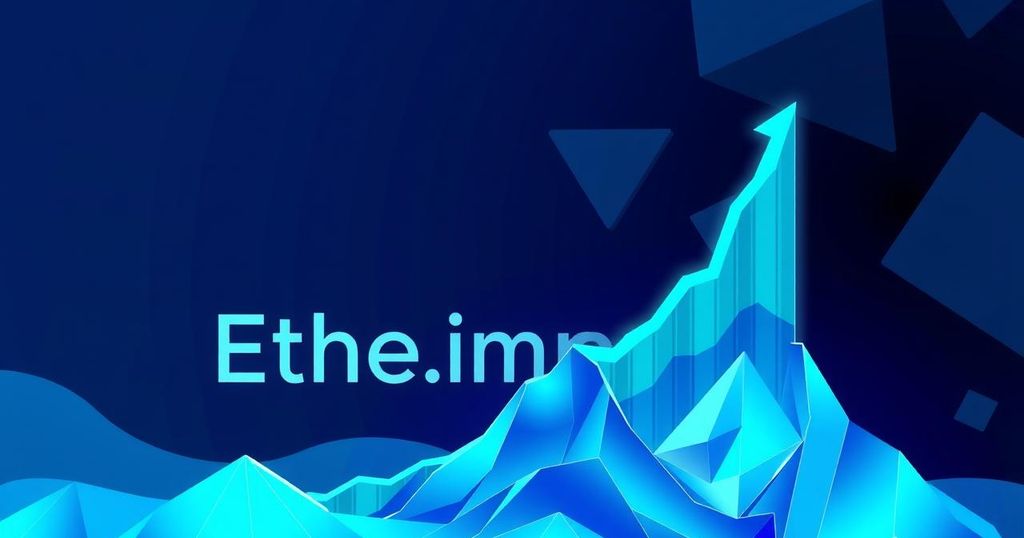Can Ethereum Reach $10,000 Before the Next Bitcoin Halving?
Ethereum is experiencing a mixed bag, with recent data hinting at a user revival and institutional interest growing. Technological upgrades are being launched, essential for regaining market momentum against competitors. The possibility of ETH reaching the $10,000 mark by 2028 hinges on Bitcoin halving cycles and overcoming current technical hurdles. Investors seeking short-term gains might want to look at new projects like Remittix (RTX).
Ethereum, a behemoth in the Web3 landscape, is finding itself in a bit of a pickle. While it supports significant portions of the crypto economy, the price of ETH has been sluggish, leaving many investors wondering if it can rise to $10,000 before the next Bitcoin halving, expected around 2028. This prediction hinges on Ethereum’s efforts to rejuvenate its network, its ongoing upgrades, and its historical trends.
Recent developments show flickers of hope for Ethereum after a rocky start to 2025. On-chain statistics indicate a rise in weekly unique addresses, hinting that users may be making a comeback. Additionally, trader enthusiasm seems to be picking up, shifting ETH back into the limelight within the market.
Institutional interest isn’t exactly negligible, either. While Spot ETFs for ETH have not seen the Bitcoin-like influx, they did amass about $2.5 billion over just two weeks. BlackRock’s venture into using Ethereum to tokenize a large Treasury fund is a significant indicator of long-term institutional dependence on the network, potentially boosting investor confidence.
Technological upgrades are another element in the mix. Vitalik Buterin has suggested ways to enhance the execution layer, aiming for better scalability and a smoother user experience. Meanwhile, the upcoming Pectra upgrade is designed explicitly to enhance network performance and efficiency.
But, challenges loom on the horizon. Rivals like Solana are drawing significant user engagement and decentralised exchange (DEX) activity. For Ethereum to sustain any bullish predictions, these upgrades need to yield measurable improvements that attract users back and elevate demand for its network.
Looking at the broader picture, the prospect of hitting $10,000 entails a timeframe stretching over multiple years, typically associated with Bitcoin’s halving cycles. Historically, Bitcoin halvings have led to significant crypto bull runs, creating notable “supercycles” in past years, including 2013, 2017, and 2021. This suggests that Ethereum, as a leading altcoin, could benefit substantially during the next cycle anticipated around 2028.
To hit that $10,000 target—given current figures sit around $1,800 to $2,000—ETH would need to surge by more than five times its existing value. Although that seems like a tall order, such gains have been observed during peak market phases driven by halving-related scarcity and a surge of retail and institutional interest.
If Ethereum can keep its relevance and network effect intact, this next halving could present a plausible window for achieving, or at least getting close to, the sought-after $10,000.
However, while the long-term forecast sparks some optimism, Ethereum faces immediate technical challenges that it must overcome. Currently, support has materialised near its -1 SD line, indicating a potential low point, but strong resistance remains in the range of $2,066 to $2,517 where many investors are sitting at a loss. Breaking through levels like $2,000, $2,300, and $2,533 is essential.
Market indicators are mixed at best. Although derivatives data points to some optimism—like a rise in open interest and call options—on-chain metrics tell a different story with signs of dwindling engagement. This complicated scenario makes short-term Ethereum price predictions rather tricky, and overcoming these roadblocks is critical to any serious claim for the $10,000 mark.
For those looking for quicker gains while Ethereum treads this long road, there are alternatives like Remittix (RTX). This project has already pulled in $14.7 million in presale, with individual tokens priced at $0.0757, targeting the extraordinarily lucrative payments market, promising immediate PayFi utility that could yield significant returns sooner than Ethereum’s more ambitious aspirations.




Post Comment